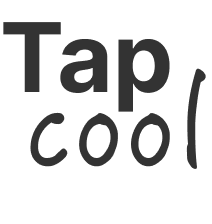Influencers have become brands’ best word-of-mouth promoters on social networks
With social commerce booming, finding the right influencers to help sell your products to the right communities of consumers has become an essential component of digital marketing. A surge in influencer campaigns this year speaks both to their effectiveness and potential for saturation – as everyone jumps on the influencer bandwagon, “banner blindness for influencers” nears. But for now, influencers are in.
According to studies from Twitter, 49% of users rely on influencers when evaluating a purchase. According to eMarketer, 43% of men between the ages of 16-64 agree that influencers affect their purchase decisions. And while only 29% of women admit that influencers affect their decisions, 86% of women use social media for purchasing advice, according to the Digital Marketing Institute.
What makes somebody an influencer?
Influencers are individuals who affect the purchasing decisions of others because of their authority, knowledge, position or relationship with their audience. Influencers have a following in a particular niche, with whom they actively engage. The size of their following often depends on the size of their niche, although the number of followers should not be the main metric for assessing the value of an influencer. Indeed, depending on the product, a celebrity with millions of followers may be exactly the wrong type of influencer your brand needs, so tread carefully.

Dan Bilzerian is an influencer for men into physical fitness. But his lifestyle won’t fit with many brands.
Influencers are usually grouped by the extent of their following, although in reality there are celebrity influencers and everyone else. It’s a good idea to have a mix of both. Here’s how they breakdown:
Nano and Micro (500-30k followers) – These will be the most credible influencers, but also the hardest to find as they are often flying under the radar. While Nike has celebrities like soccer star Renaldo at its disposal, it also has hundreds of “nano- and micro-influencers” to wear its products and promote them locally to their own community of followers. Using your own employees as nano-influencers is an option in the B2B space, but they must actively illustrate technical expertise on their own social media channels and especially on LinkedIn.
Power (30k-500k followers) – Recognizable in an instant to a particular industry or community, but not well known outside of the space, “power influencers” represent the sweet spot for most brands not looking for mass appeal, but for targeted, credible support. These influencers can often become “brand ambassadors” who promote the brand over a longer time than just a single campaign. Many of today’s most popular influencers who have long since crossed into “celebrity influencer” (think markiplier or ninja) grew organically as “power influencers” before they made their mark. Find a credible, personable industry expert who likes your products, and you’ve found a power influencer to target.
Celebrity (500k+ followers) – More expensive and usually less authentic, celebrity influencers are best used for major consumer brands or for big-budget campaigns. The most notable influencers, like Kim Kardashian, Kylie Jenner, and Lebron James, have transcended social media and recall the Bruce Jenner of old, who was one of the original influencers when he appeared on a Wheaties cover in 1977.

As influence increases so too does the cost to procure the services of an influencer.
What unique tactics can I deploy with my influencers?
Because of algorithmic changes to organic posts, influencers typically appear in a brand’s sponsored content or in a brand’s organic feed. But the most effective influencing typically occurs on an influencer’s own feed where they are free to express themselves creatively and speak in an authentic way to their community of followers. Here is a mix of tactics to consider using on an influencer’s social feed or your own.
Promote product and content collaborations
Last year, Nike partnered with soccer player Renaldo to promote its new soccer shoe. Renaldo, who has the world’s largest Instagram following is an obvious example of the power of social media influence. For GoPro, giving cameras away to nano-adventurers not only generated a buzz, but created an influx of user-generated content that could be re-purposed for other marketing efforts. Finding an expert in your field to help concept, design, and promote a product may be the holy grail of influencer marketing.

Subtle (or not-so subtle) product placement from trusted influencers can sway a purchase decision
Showcase reviews and unboxings
The unboxing craze of the last few years introduced an unlikely cast of influencers, particularly on YouTube, where channels like “Ryan Toys Review” become viral hits. The child, Ryan, would review a toy, and if he liked it, his seal of approval would lead to an increase in sales. Similar influencers with an unlikely appeal include many self-described “nerds”, who now play a key role in promoting new technology and video games. Putting your products into the hands of these influencers can be a lower-cost way to generate word-of-mouth sales. Just remember, they’ll be honest with their reviews, so be prepared for a dose of reality if your product falls short.
Hype up competitions and giveaways
Hiring an influencer to promote your competitions and giveaways assures that your target audience will know about the promotion. When Lenovo wanted to drive awareness about its new YOGA 3 Pro, the brand worked with millennials, who showcased their “Day with YOGA” by producing authentic videos and blog posts. The influencers featured the product as a go-to tool for their creative expression. Each of these influencers also promoted Lenovo’s giveaway contest to their audiences. The campaign generated 51 million social impressions while the giveaway received more than 61,000 entries.
Developing an influencer campaign
Whether you are looking to develop a short-term, always-on or campaign-based influencer strategy, following this framework creates a recipe for success.
1. Define Mission & Goals – What problem do we want to solve? How will the influencers ladder up to larger business goals?
2. Assess Competitive & Audience Insights – What are competitors doing and where is the white space? Are there parallel brands who can provide inspiration? What are our audience’s passion points and do they overlap with the brand’s goals? What are the nuances and messaging for each audience?
3. Identify Influencer Archetypes – What types of influencers align to the target? Is there an influencer archetype we can use to winnow our search down to a limited set of influencer options?
4. Establish a Strategic Communication Plan – What are the key moments/conversations for influencer activation? How will the influencer integrate with those moments and campaigns? How will you introduce and promote the influencer? How will your influencer(s) integrate with on-brand channels?
5. Create an Executional Approach – Map platform recommendations to each influencer archetype. Identify vendor opportunities to support execution. Establish timeline and cost. Plan for media integrations, physical activations, or promotional events.
